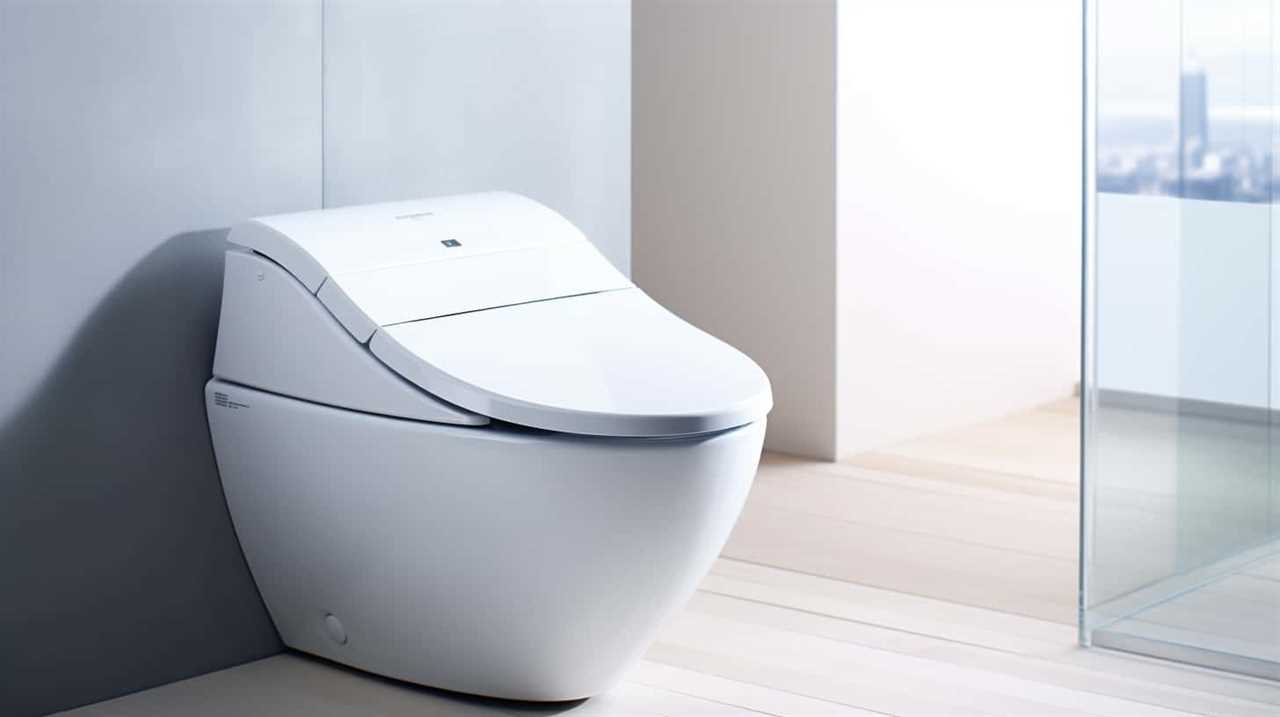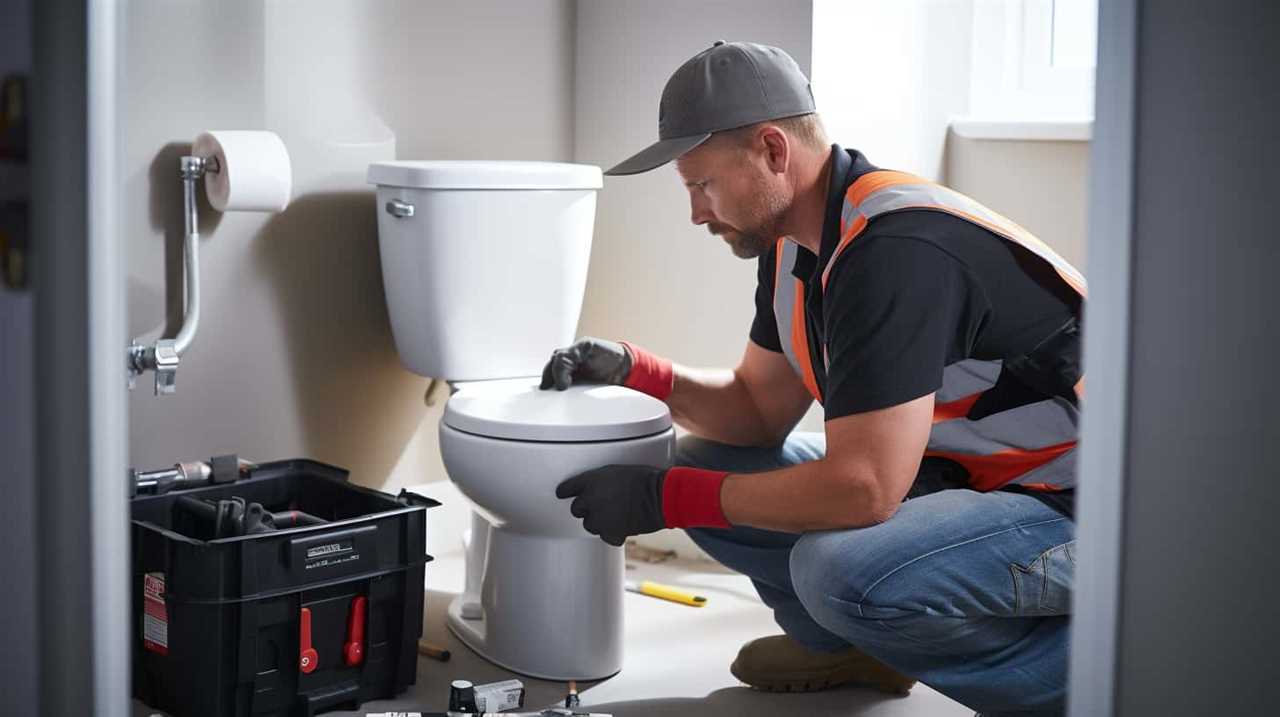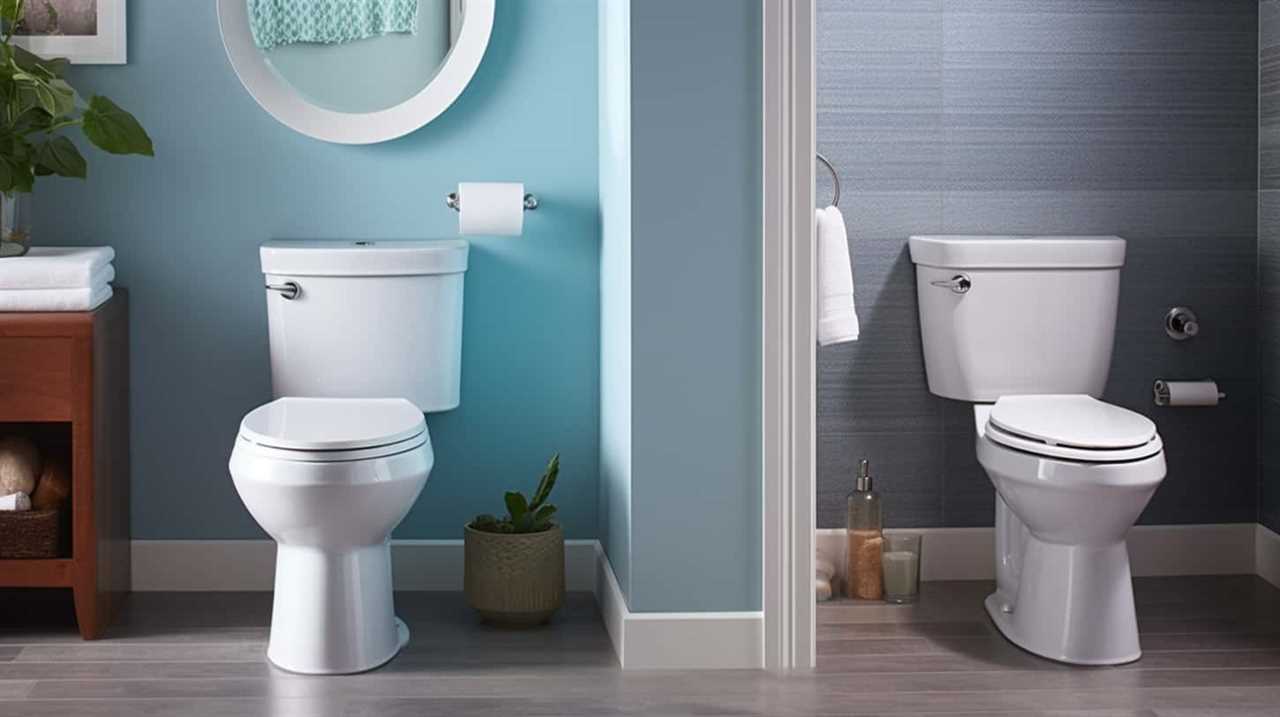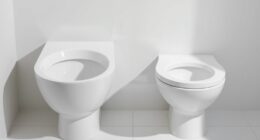Did you know that the average person flushes the toilet about five times a day? It’s a simple task we take for granted, but have you ever wondered what actually powers the flushing toilet?
In this article, we will delve into the technical aspects of the water supply, tank and fill valve, flushing mechanism, and plumbing system that work together to ensure our toilets function efficiently.
Get ready to master the inner workings of the flushing toilet!
Key Takeaways
- Water pressure is crucial for effective waste removal in a flushing toilet.
- The tank and fill valve system is responsible for holding and refilling the water in the tank after each flush.
- The flushing mechanism uses the siphoning action to remove waste by lifting the flapper valve and creating a powerful force of water.
- There are two main types of flushing systems: gravity systems and pressure-assisted systems, each with their own advantages and considerations.
Water Supply
The water supply is crucial for the functioning of a flushing toilet. Without an adequate water supply, the toilet wouldn’t be able to effectively remove waste and maintain cleanliness.
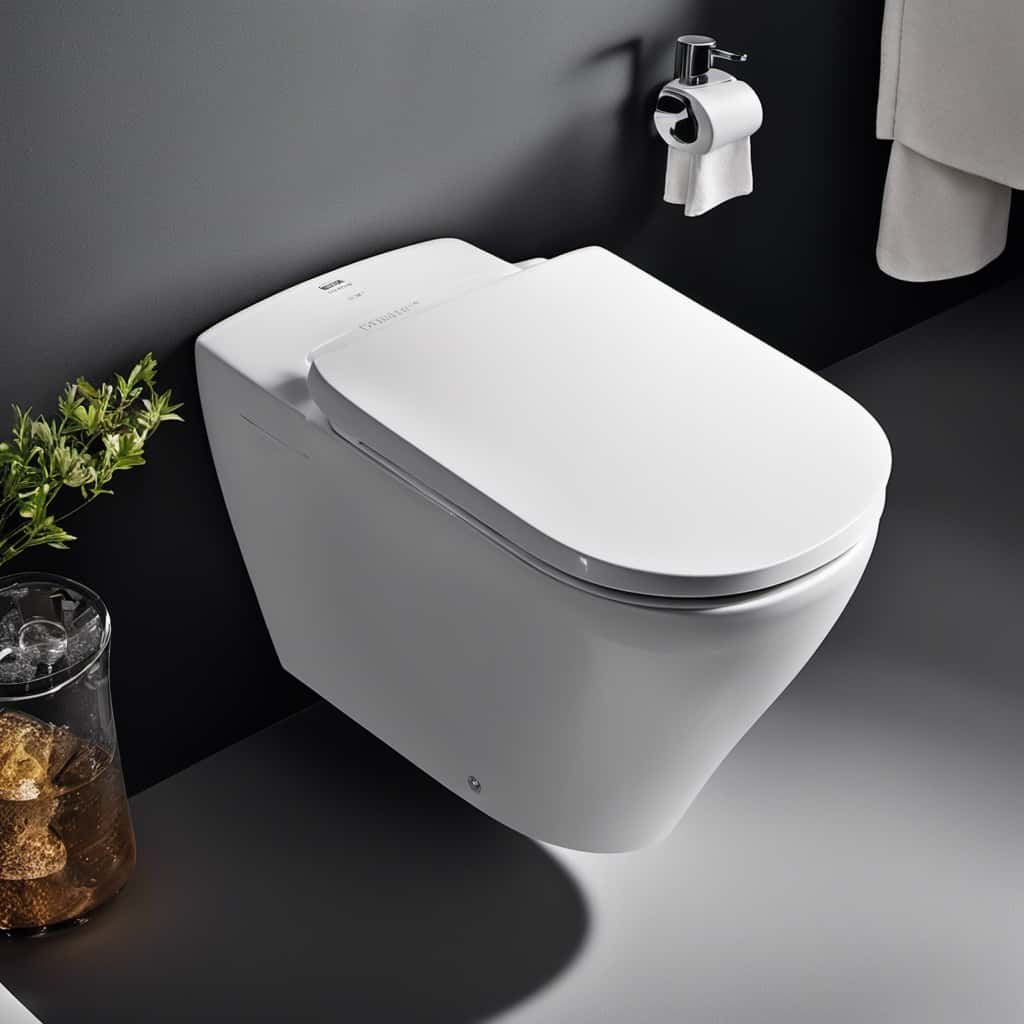
One key aspect of the water supply is water pressure. Water pressure refers to the force at which water is delivered to the toilet. Sufficient water pressure ensures that the toilet bowl fills up quickly and that waste is flushed away efficiently.
Another important factor is water flow. Water flow refers to the rate at which water is delivered to the toilet. A steady and consistent water flow is necessary for a proper flush, as it helps to carry away waste and prevent clogs.
Therefore, maintaining optimal water pressure and flow is essential for the proper functioning of a flushing toilet.
Tank and Fill Valve
To ensure a steady water supply, we rely on the tank and fill valve in a flushing toilet.
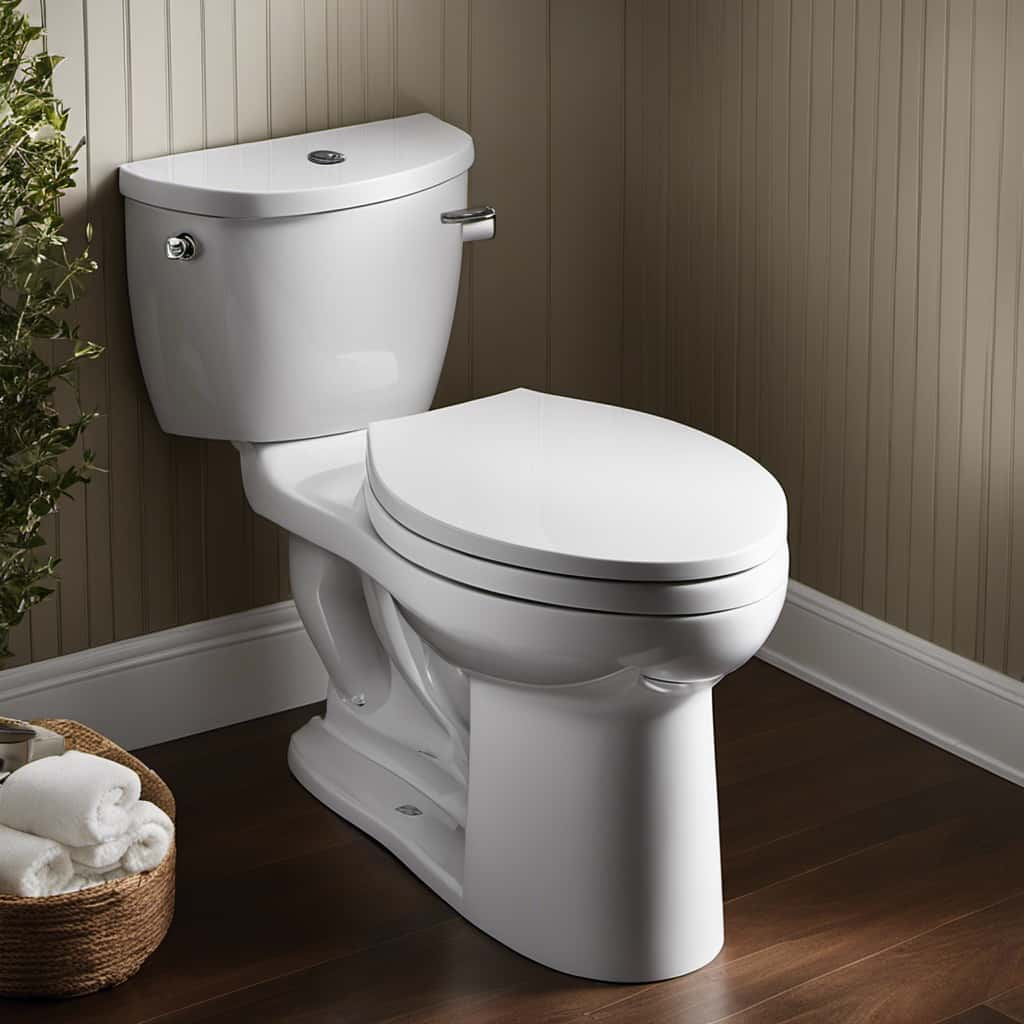
The tank, located at the back of the toilet, holds a certain amount of water that’s released during each flush.
The fill valve, also known as the float valve, is responsible for refilling the tank with water after a flush. When the tank is empty, the fill valve opens to allow water to flow in. As the tank fills up, the float valve rises until it reaches a certain level, at which point it shuts off the water supply. This ensures that the tank doesn’t overflow.
To initiate a flush, the user simply needs to press the flush handle, which triggers a chain or lever mechanism that opens the flush valve and releases the water into the bowl.
This transition from the tank and fill valve to the flushing mechanism ensures the proper functioning of the flushing toilet.
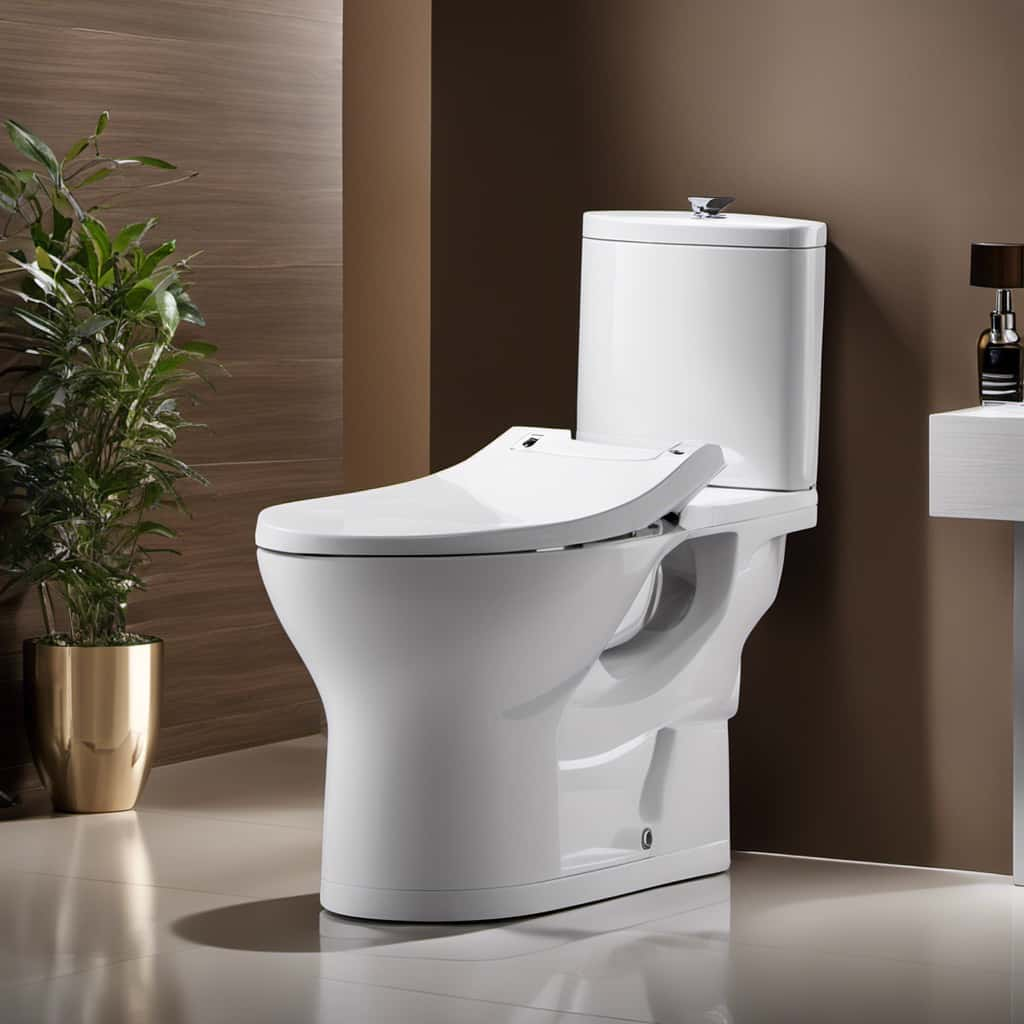
Flushing Mechanism
Now let’s delve into the flushing mechanism, which plays a crucial role in the proper functioning of the toilet.
The flushing mechanism is responsible for removing waste from the toilet bowl through a process called siphoning action. When the flush lever is pressed, it lifts a flapper valve at the bottom of the tank, allowing water to rush into the toilet bowl. This sudden influx of water creates a powerful force that pushes the waste down the drain.
As the water level in the bowl rises, it creates a vacuum that initiates the siphoning action. This vacuum pulls the waste along with the water, effectively flushing it away.
Understanding the flushing mechanism is essential as it sets the stage for the subsequent discussion on gravity or pressure-assisted systems.
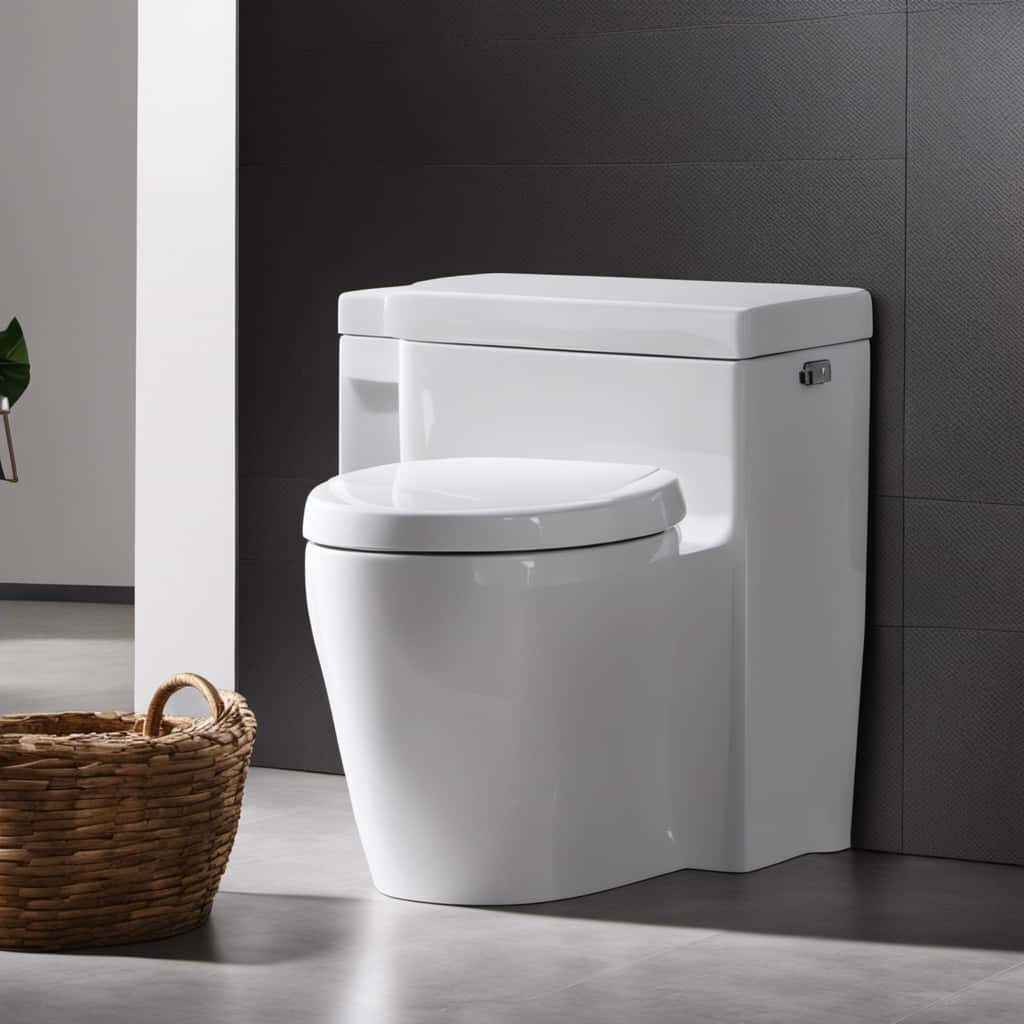
Gravity or Pressure-Assisted Systems
Moving on from the flushing mechanism, let’s explore the two main types of systems that power the flushing toilet: gravity and pressure-assisted.
- Environmental impact: Gravity systems are known for their low environmental impact since they rely on the natural force of gravity to flush waste. This means they use less water and have fewer parts that may require maintenance or replacement. Pressure-assisted systems, on the other hand, use additional pressure to enhance the flushing power, which may consume more water and energy.
- Cost comparison: Gravity systems tend to be less expensive to install and maintain compared to pressure-assisted systems. Gravity toilets have a simpler design and operate with less complexity, leading to lower costs associated with repairs and replacements. Pressure-assisted systems, although more expensive upfront, may offer long-term savings due to their efficiency and durability.
Plumbing and Drainage System
How does the plumbing and drainage system contribute to the functionality of the flushing toilet?
The plumbing and drainage system plays a vital role in the operation of the flushing toilet by facilitating the proper disposal of waste. When we flush the toilet, the wastewater and solid waste are carried away through a network of pipes connected to the sewer systems. The plumbing system ensures that the wastewater is directed towards the sewer lines and away from our homes.
Gravity or pressure-assisted systems assist in moving the waste through the pipes, allowing for efficient waste disposal. The drainage system, consisting of traps and vents, prevents odors from entering our living spaces and ensures the smooth flow of waste.
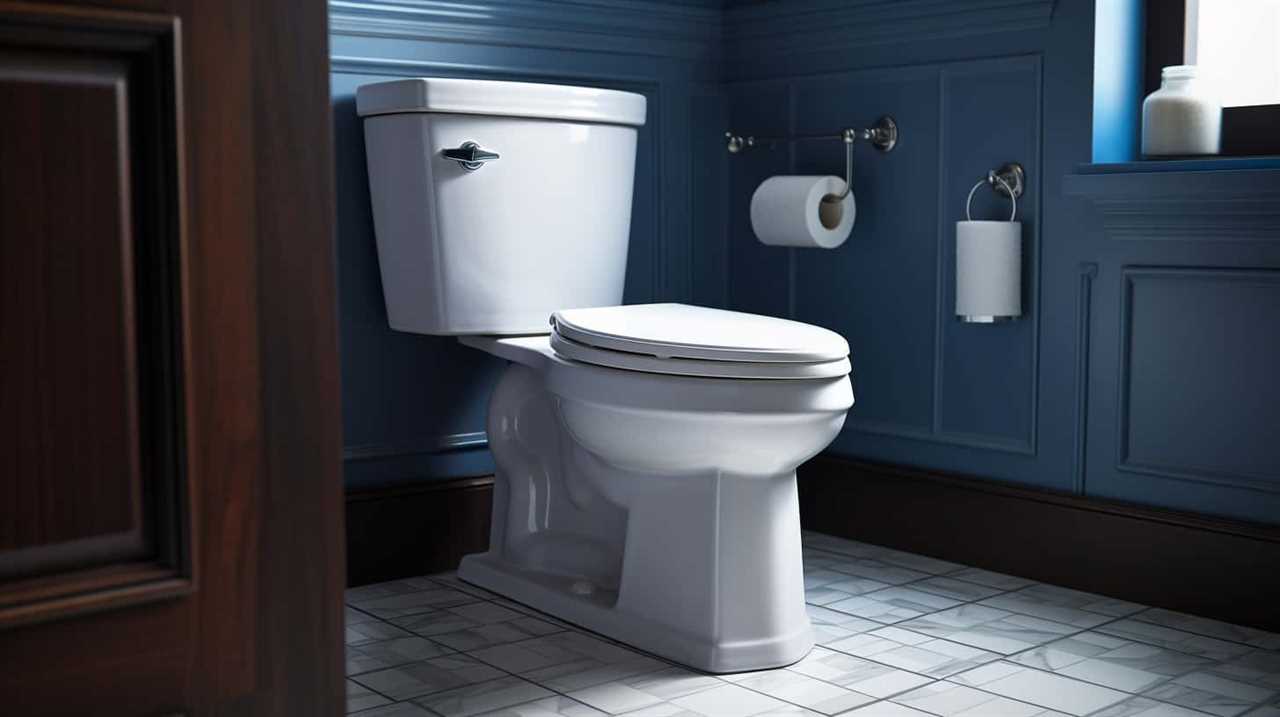
Without an effective plumbing and drainage system, the flushing toilet wouldn’t be able to efficiently remove waste from our homes.
Frequently Asked Questions
How Much Water Does a Typical Flushing Toilet Use per Flush?
A typical flushing toilet uses approximately 1.6 gallons of water per flush. This amount can vary depending on the model and age of the toilet. Water conservation is crucial to reduce the environmental impact of excessive water usage.
Can a Flushing Toilet Still Function Without a Water Supply?
Yes, a flushing toilet can function without a water supply if it utilizes alternative toilet designs or water-saving technologies. These innovative solutions offer efficient and sustainable options for waste disposal.
Are There Any Alternative Methods to Fill the Toilet Tank Besides Using a Fill Valve?
There are alternative filling methods for toilet tanks besides using a fill valve. One option is using water-saving technologies like dual flush systems or gravity-fed tanks. These methods can help conserve water while still ensuring proper flushing.
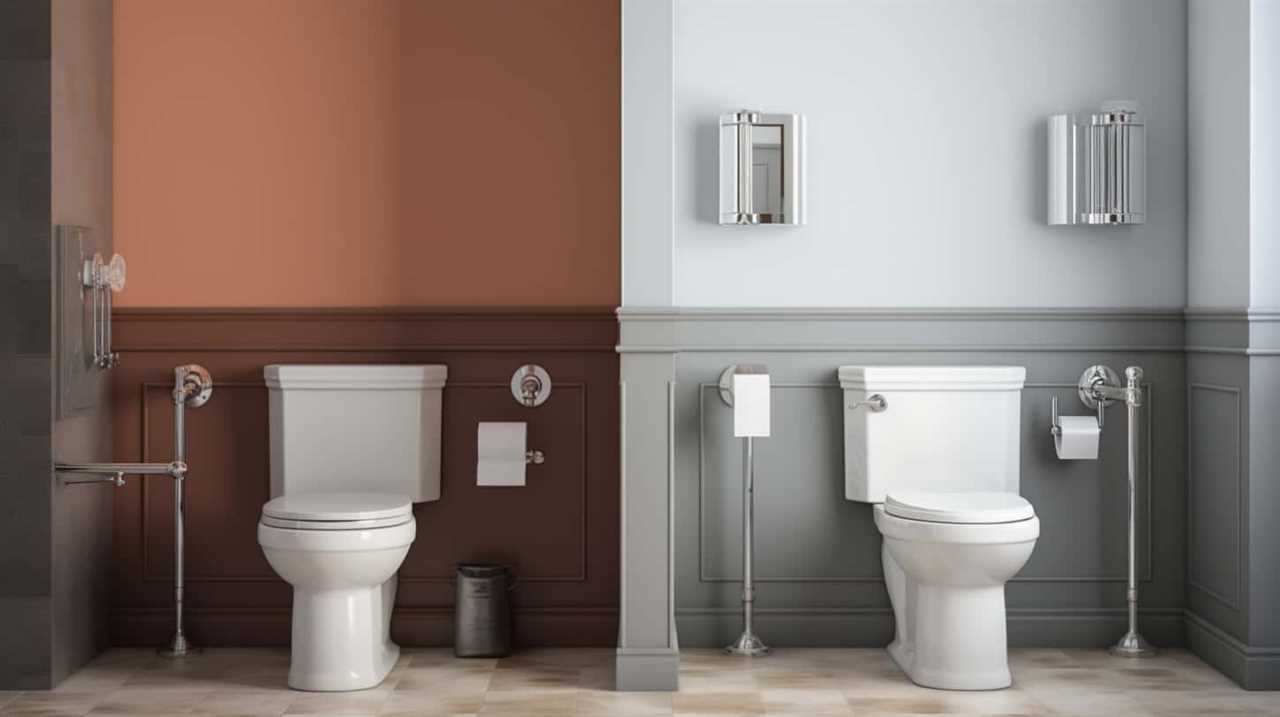
What Are the Main Differences Between Gravity-Assisted and Pressure-Assisted Flushing Systems?
The main differences between gravity-assisted and pressure-assisted flushing systems are how they generate force to flush waste. Gravity-assisted relies on the weight of the water, while pressure-assisted uses compressed air.
How Often Should I Have My Plumbing and Drainage System Inspected for Potential Issues With the Flushing Toilet?
We recommend regular plumbing maintenance to ensure optimal performance of the flushing toilet. Inspecting the plumbing and drainage system periodically can help identify signs of potential issues and prevent costly repairs in the future.
Conclusion
In conclusion, the flushing toilet is powered by a combination of water supply, a tank and fill valve, and a flushing mechanism.
It can operate using either gravity or pressure-assisted systems.
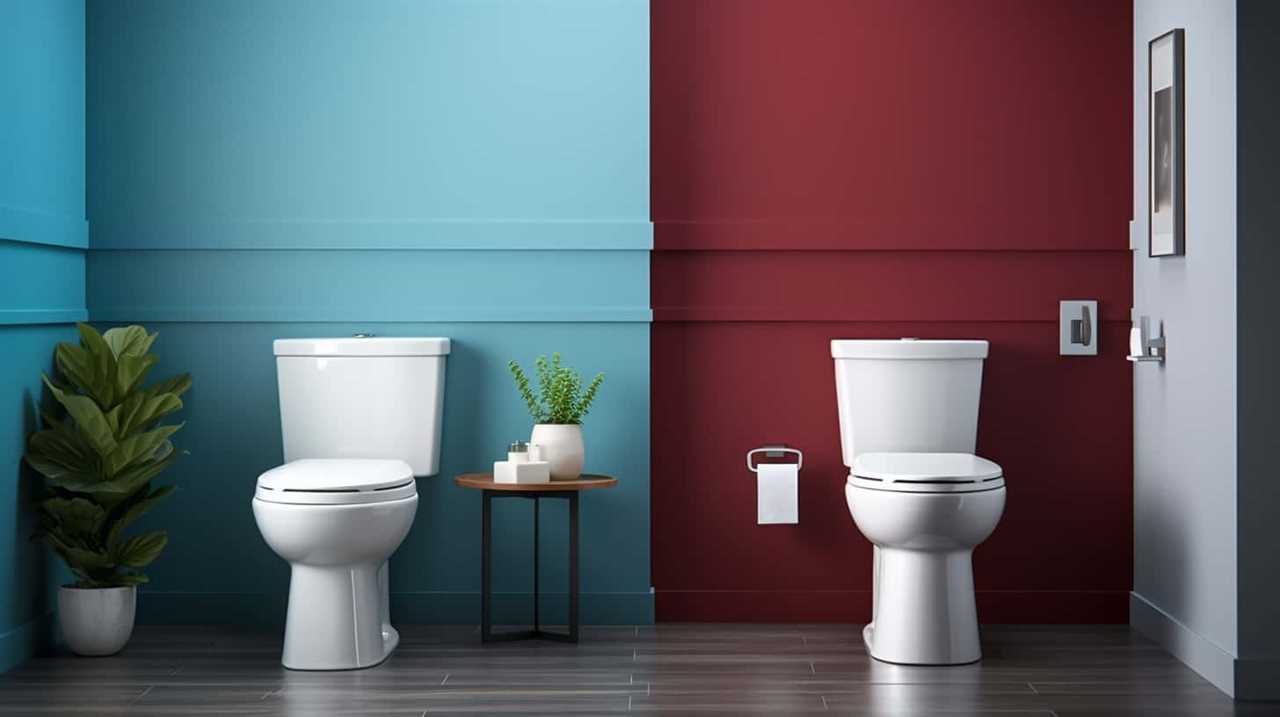
The plumbing and drainage system plays a vital role in ensuring the efficient disposal of waste.
Like a well-oiled machine, the flushing toilet seamlessly completes its task, ensuring cleanliness and hygiene in our daily lives.



